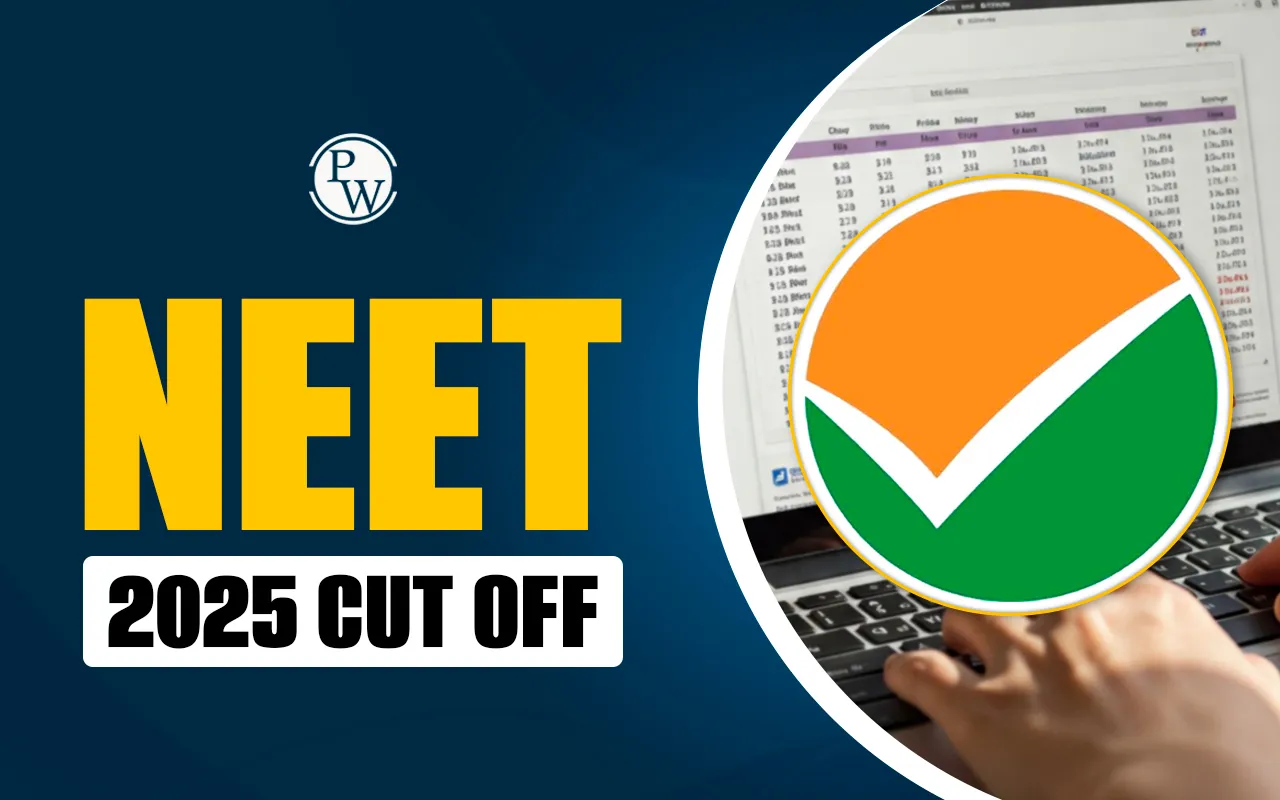
Difference Between Innate and Adaptive Immunity: The human immune system is made up of two essential components: the innate immune system and the adaptive immune system. Together, these two systems guard the body from illnesses and infections. The body is protected from a variety of pathogens and toxins by the immune system, which is a complex network of molecules, cells, and tissues. Innate immunity is always present in the body, providing a general defence mechanism. In contrast, adaptive immunity is activated only when exposed to external stimuli.
| NEET Biology Syllabus | NEET Biology Diagrams |
| NEET Biology MCQ | NEET Biology Chapter wise Weightage |
| NEET Biology Notes | NEET Previous Year Question papers |
The primary difference between innate and adaptive immunity is in their responses: innate immunity elicits a non-specific immune response against pathogens, whereas adaptive immunity generates a specific and targeted response against specific pathogens. This article will focus on the difference between innate and adaptive immunity and how they intersect and contribute to autoimmune conditions.
Difference Between Innate and Adaptive Immunity Overview
Innate and adaptive immunity are important components of the immune system that protect the body from harmful microorganisms such as viruses, bacteria, and parasites. The immune system is a complex network of cells, tissues, and organs that defend the body against bacteria, viruses, and fungi. Innate immunity, present from birth, offers the initial defence. Adaptive immunity evolves to target specific diseases. Innate immunity, or natural or native immunity, provides an early defence against microbes. It includes cellular and biochemical defence mechanisms activated before infection and ready to respond quickly to microbial threats. These innate mechanisms are limited to structures shared by related groups of microbes and cannot frequently distinguish subtle differences between them.
Adaptive immunity, known as specific or acquired immunity, recognizes and responds to various microbial and nonmicrobial substances. Its distinguishing characteristics are specificity, the ability to distinguish between different substances, and memory, a heightened response to repeated exposure to the same microbe. Lymphocytes, a type of cell, and their secreted products, such as antibodies, are the distinguishing characteristics of adaptive immunity. Antigens cause specific immune responses that lymphocytes and antibodies recognize. The following article provides more information on the difference between innate and adaptive immunity.
Difference Between Innate and Adaptive Immunity
In the host's defence mechanism against an antigen, innate immunity is the first protective barrier. This non-specific immune response develops within hours of exposure. Antigen-specific adaptive immunity develops several days after exposure. The table illustrates the difference between innate and adaptive immunity:
| Difference Between Innate and Adaptive Immunity | ||
| Characteristics | Innate Immunity | Adaptive Immunity |
| Presence | Inherent in the body | Generated in response to exposure to a foreign substance |
| Specificity | Non-Specific | Specific |
| Response | Fights any foreign invader | Fights only specific infection |
| Speed | Rapid | Slow (1-2 weeks) |
| Potency | Limited and Lower potency | High potency |
| Time span | Once activated, immunity persists throughout life | Lifelong or short-lived immunity |
| Inheritance | Generally inherited from parents and passed to offspring | Not inherited from parents to offspring |
| Memory | Cannot react with equal potency upon repeated exposure to the same pathogen | Long-term memory of specific encountered pathogens |
| Presence | Present at birth | Develops during a person’s lifetime and can be short-lived |
| Allergic Reaction | None | Immediate and Delayed hypersensitivity |
| Used Against | For microbes | Microbes and non-microbial substances called antigens |
| Memory | No memory | Long-term memory |
| Diversity | Limited | High |
| Speed | Faster response | Slower response |
| Complement system activation | Alternative and lectin pathways | Classical pathway |
| Anatomic and physiological barriers | Skin, Mucous membranes, Temp, pH, chemicals, etc. | Lymph nodes, spleen, mucosal associated lymphoid tissue |
| Composition | Physical and chemical barriers, phagocytic leukocytes, dendritic cells, natural killer cells, and plasma proteins | B cells and T cells |
| Development | Evolutionary, older, found in both vertebrates and invertebrates | Developed recently, found only in vertebrates |
| Example | White blood cells fighting bacteria, causing redness and swelling when you have a cut | Chickenpox vaccination preventing chickenpox due to the adaptive immunity system remembering the foreign body |
Innate Immunity
An organism's innate defence mechanism, called innate immunity, genetic immunity, or natural immunity, is present from birth. This type of immunity is encoded in one's genetic makeup and provides lifelong protection. It represents the more evolutionarily primitive immune system and is not limited to vertebrates; it can also be found in plants, fungi, and insects. The innate immune response is quick and non-specific, which means it does not discriminate based on which invader it detects. In humans, the innate immune system consists of physical and chemical barriers, which act as the first and second lines of defence.
Physical and chemical barriers are the body's first defence against invasion. Examples include the skin and eyelashes, while tears, mucous, blood clotting factors, and stomach acid help to stop and destroy invaders.
Chemical defences are proteins that interact with invaders, either directly or indirectly, triggering cascades of reactions that cause inflammation and recruit additional immune mediators for defence. Examples include the complement system, interferons, and interleukin-1.
Cellular defences recognize non-self entities, take measures to neutralize or eliminate them, and activate the adaptive immune system. Notable examples include phagocytes, natural killer cells, and mast cells.
Adaptive Immunity
Adaptive immunity, or acquired immunity, is the second line of defence when pathogens attack innate immunity. Adaptive immunity develops in the body over time when exposed to pathogens, specifically targeting the pathogens that cause disease. The active immune response consists of detecting the pathogen and producing immune cells to eliminate it from the body. Furthermore, it produces memory cells that store information about the pathogen, preventing future bodily attacks. Adaptive immunity can be categorized into two types: Active Immunity and Passive Immunity.
- Active Immunity: This type develops when the body encounters various disease-causing agents. B cells produce antibodies to halt the pathogen's activity in the body.
- Passive Immunity: In this form of immunity, antibodies come from an external source, such as another person. For instance, antibodies can be transferred to a newborn through mother's milk or induced artificially by injecting antibodies to combat diseases.
The adaptive immune system uses two strategies to prevent infections from entering the body: humoral and cell-mediated responses. When B cells recognize a foreign antigen, they produce antibodies to neutralize its effects and prevent it from infecting cells. Meanwhile, cytotoxic T cells kill pathogen-infected body cells as part of the cell-mediated immune response.
PW NEET online coaching is an excellent choice for NEET exam preparation. PW offers the best teachers and flexible study options. Our study materials provide everything you need. Choose us for a top-notch learning experience!
Difference Between Innate and Adaptive Immunity FAQs
What are the characteristics of innate and adaptive immunity?
Are B cells innate or adaptive?
Is CD4 innate or adaptive?
What is an example of adaptive immunity?
Are T cells innate or adaptive?
What is the difference between innate immunity and acquired immunity?










